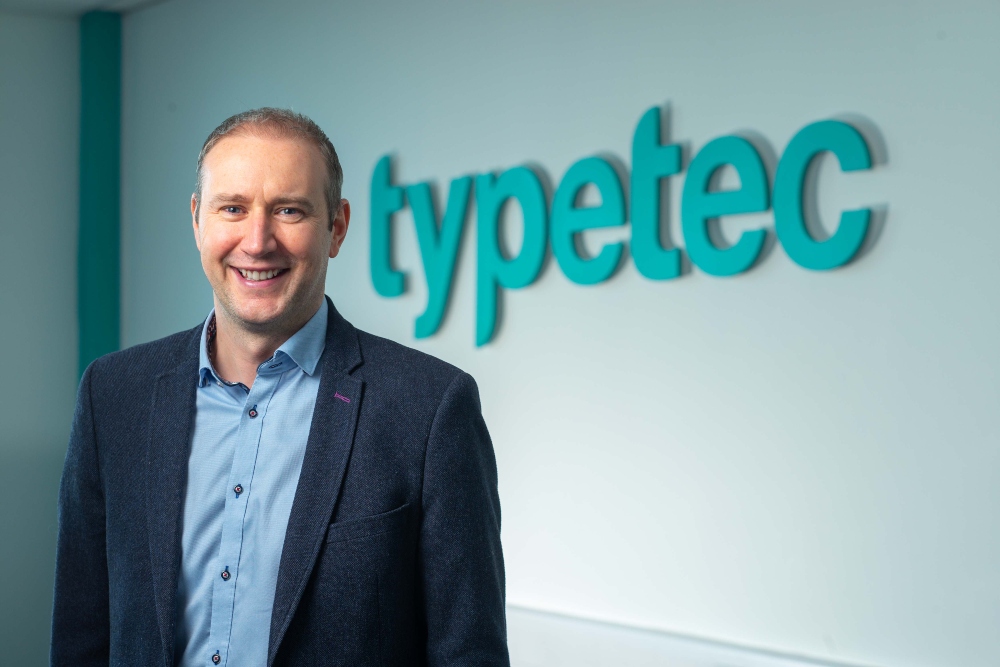Making the most of the modern workplace means putting people first, says Paul Dooley from Typetec.
Time has moved on since the initial impact of the pandemic, lockdowns have lifted and restrictions have been removed. In the working world, a hybrid approach is commonplace, yet many organisations still remain in a state of flux.
Some are getting to grips with what their workplace looks like. Others are trying to get their growth back on track. Undoubtedly, there are still challenges to overcome. Equally, there are opportunities to capitalise on.
“The key is to plan with your employees, as opposed to planning around them”
However, in order to do this, and regardless of what your objectives are, the foundation of success remains the same: your people. People are at the heart of any business. They are the ones delivering service, creating company culture and driving change.
We’re in a time of a looming economic slowdown where recruitment is stalling, and the job market is highly competitive. Therefore, now more than ever, businesses need to look after their people, make them feel appreciated and provide opportunities that will entice them to stay and grow with the company, as well as attract new people into your organisation.
Enable your employees day to day
The pandemic is a perfect example of what happens when business continuity is disrupted and organisations are unprepared. That’s why enabling your employees day to day is crucial.
Many businesses adopted new technologies, to provide additional mobility and security for customers, to offset the impact of the pandemic. However, for those that had no continuity plan in place, the Covid-19 crisis may have been harder than it needed to be. Not just in terms of enabling staff to work remotely, but also in supporting their wellbeing.
It starts with enabling employees day-to-day. The key is to plan with your employees, as opposed to planning around them. The workplace of today requires modern tools and planning, and an organisation must provide those tools and plan ahead to enable productivity.
Providing the latest collaboration tools can make the work day a lot easier for an employee. An accessible platform catering to employee needs is what a business should aim for. The right tools require the right training. It’s important to maintain productivity by providing the necessary advice and training.
This needs to be consistent and digestible. Perhaps, a business can outsource these necessities, and external influence can be the main provider of insight across different employee teams. Equally, a business can use internal expertise to provide workshops and training. As well as training for new tech, training for practical subjects like time management or workshops on mindfulness can also be highly beneficial.
Support staff in all situations
The fallout of the pandemic brought agility and flexibility to the fore. Flexibility and the requirement of an agile workplace remain paramount. To support employees and their situations, organisations need to have open discussions.
Avoid pigeonholing your workforce in terms of workstyles and look at other workstyle adoptions that may suit your organisation. Perhaps the 4-day working week, flexi-time or fully remote are options. However, before taking the leap with such initiatives, speaking with your staff and finding out what their needs are, is vital. Assuming what your employees want as opposed to asking them, is not the right approach. Make an informed decision, based on those conversations with employees.
When it comes to measuring business success, productivity levels are a key metric for organisations. Last year, one in three companies reported an increase in productivity due to remote working according to a study by Kefron. An internal study or company-wide discussion to monitor productivity in the organisation could be very beneficial. Taking a one-solution-fits-all approach can be detrimental to employees. You must remember those who may not like hybrid working need support just as much as those who do.
It’s clear that the perfect balance has yet to be achieved, with CSO research showing that nearly half of employees are saying they have to work more than their formal hours to ensure all of their tasks are completed. Practices like regular catchups with employees can curb this. You want an agile workplace for employees, not one where they are overworked and feel under-appreciated.
Focus on the bigger (people) picture
While it might be required on occasion, it shouldn’t be commonplace to work lots of extra hours. You want to take care of employees, avoid burnout and allow them to achieve their goals within the workday, as much as possible. Advise staff on how to address this and provide some tools or tips that can help.
A key takeaway in creating an effective modern workplace with satisfied employees is to not assume you know what will meet staff’s needs, but rather engage with them regularly and involve them in consultations and idea generation. Employees will have great ideas in terms of how they think the modern workplace can be improved, and it’s up to the leaders at the top to give them the opportunity to voice those ideas and then choose what strategies to implement going forward.
Progress is already being made as the CSO reports that over 90% of Irish workers are satisfied in their current job. This shows that choice and flexibility are working for staff.
A connected and positive company culture can be harnessed through listening to employees, engaging with them and taking their ideas on board. It’s important to remember that technology is imperative to the modern workplace, but what is more crucial is the people who use it. Once you give your employees the right tools to enhance their productivity, the flexibility to suit their needs and the opportunity to contribute to the organisation’s ethos, that’s when a business will truly make the most of the modern workplace.




